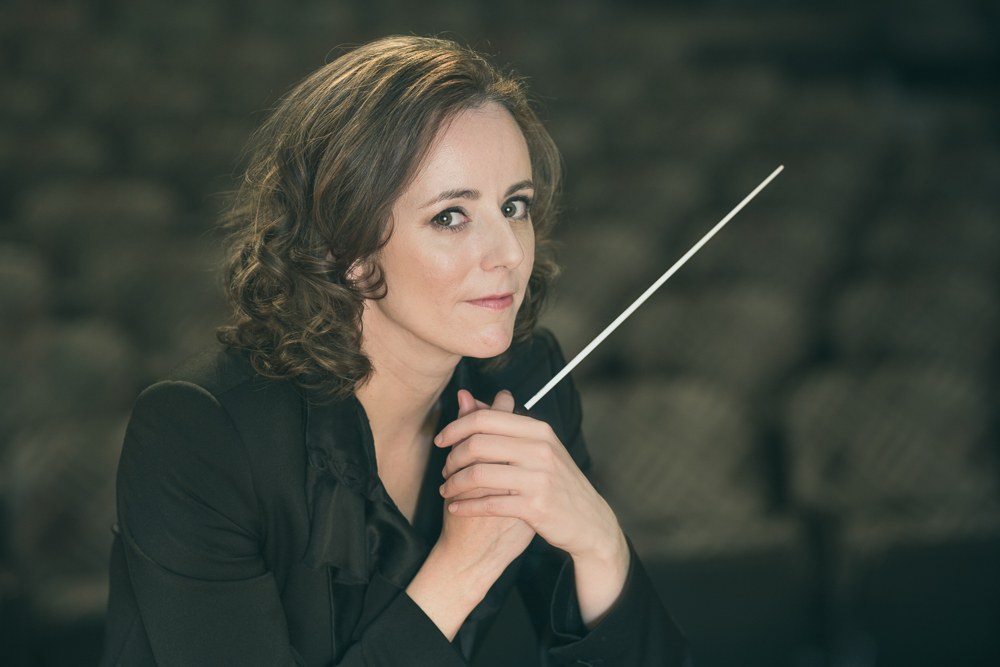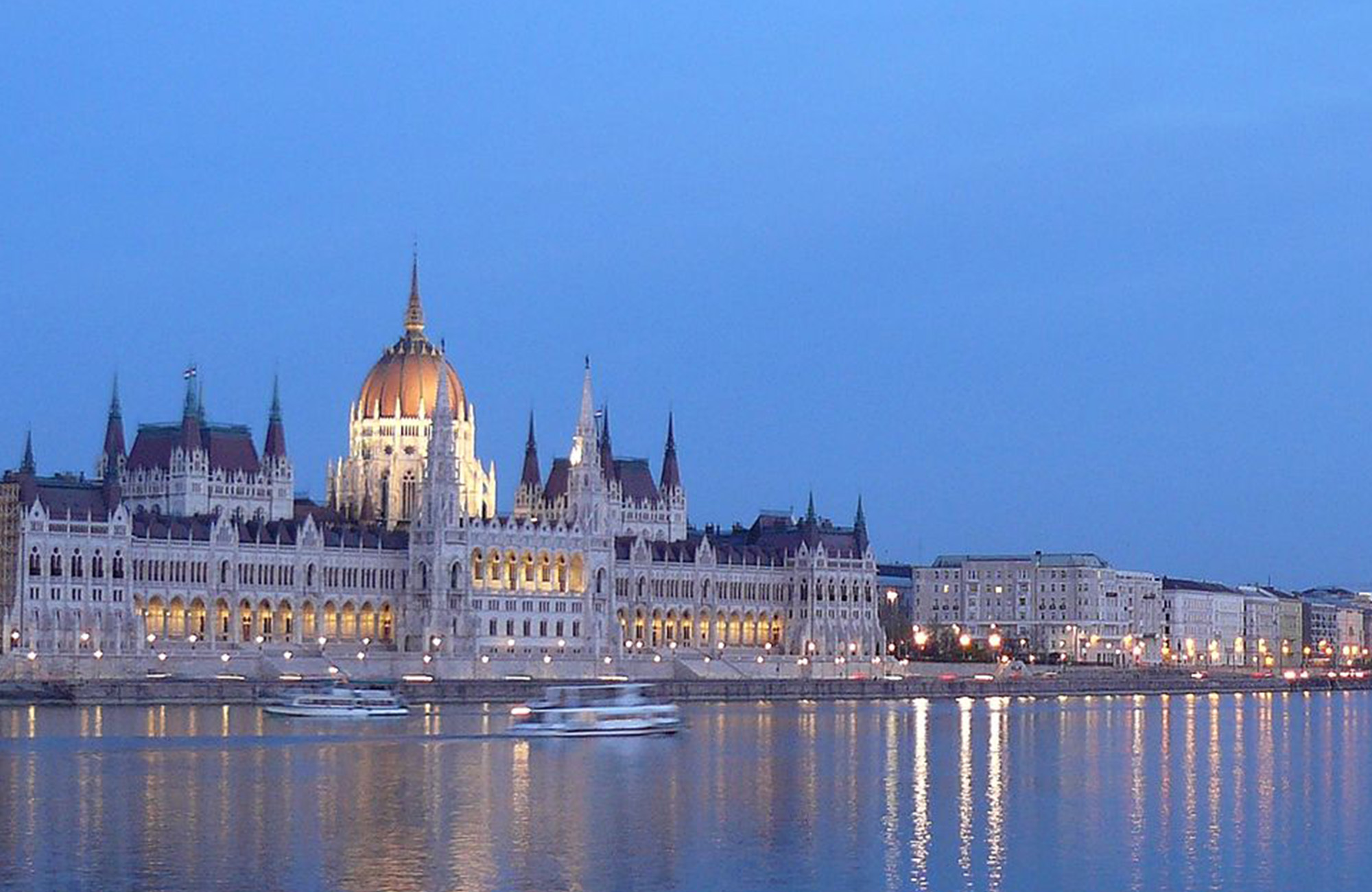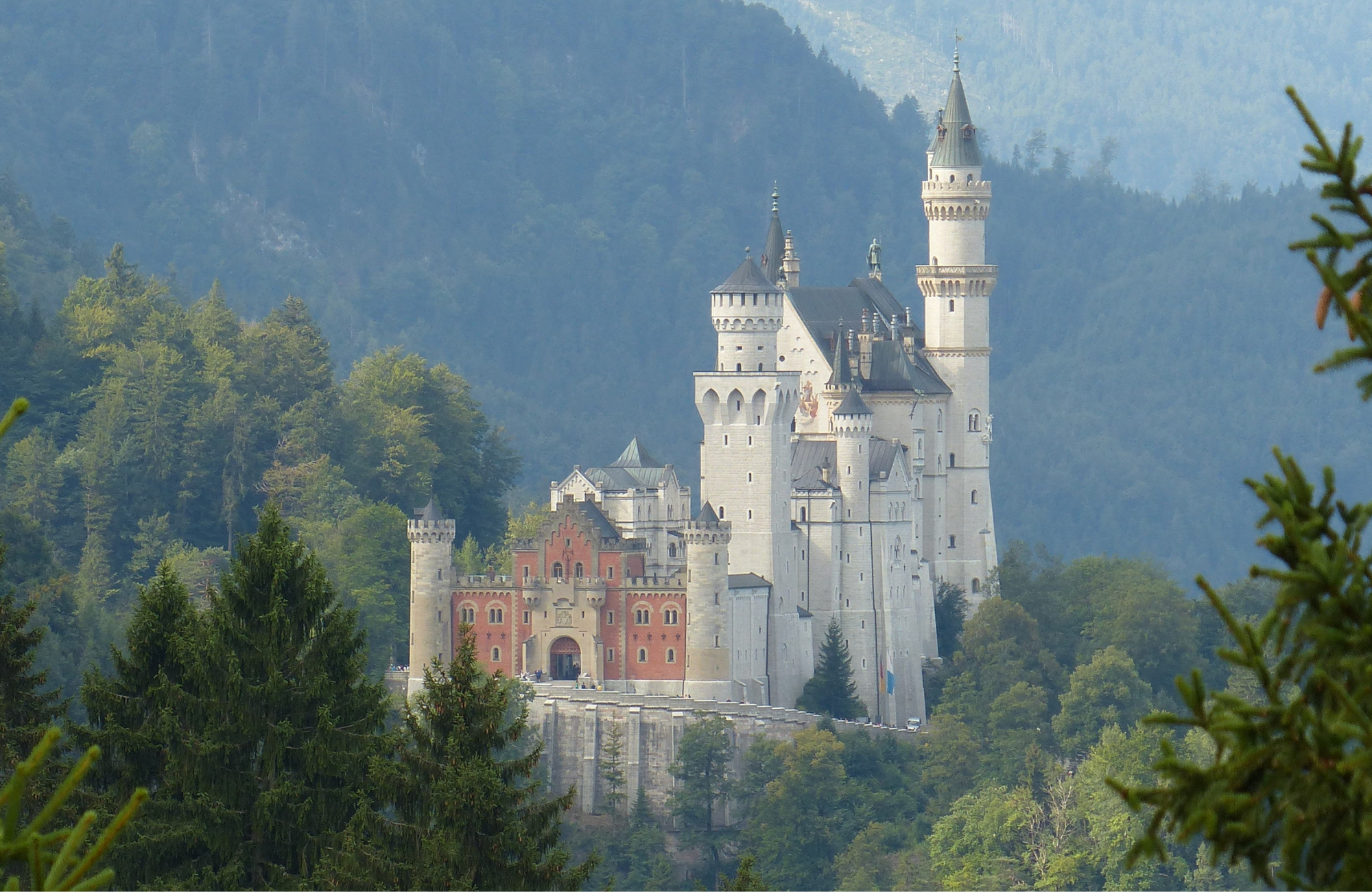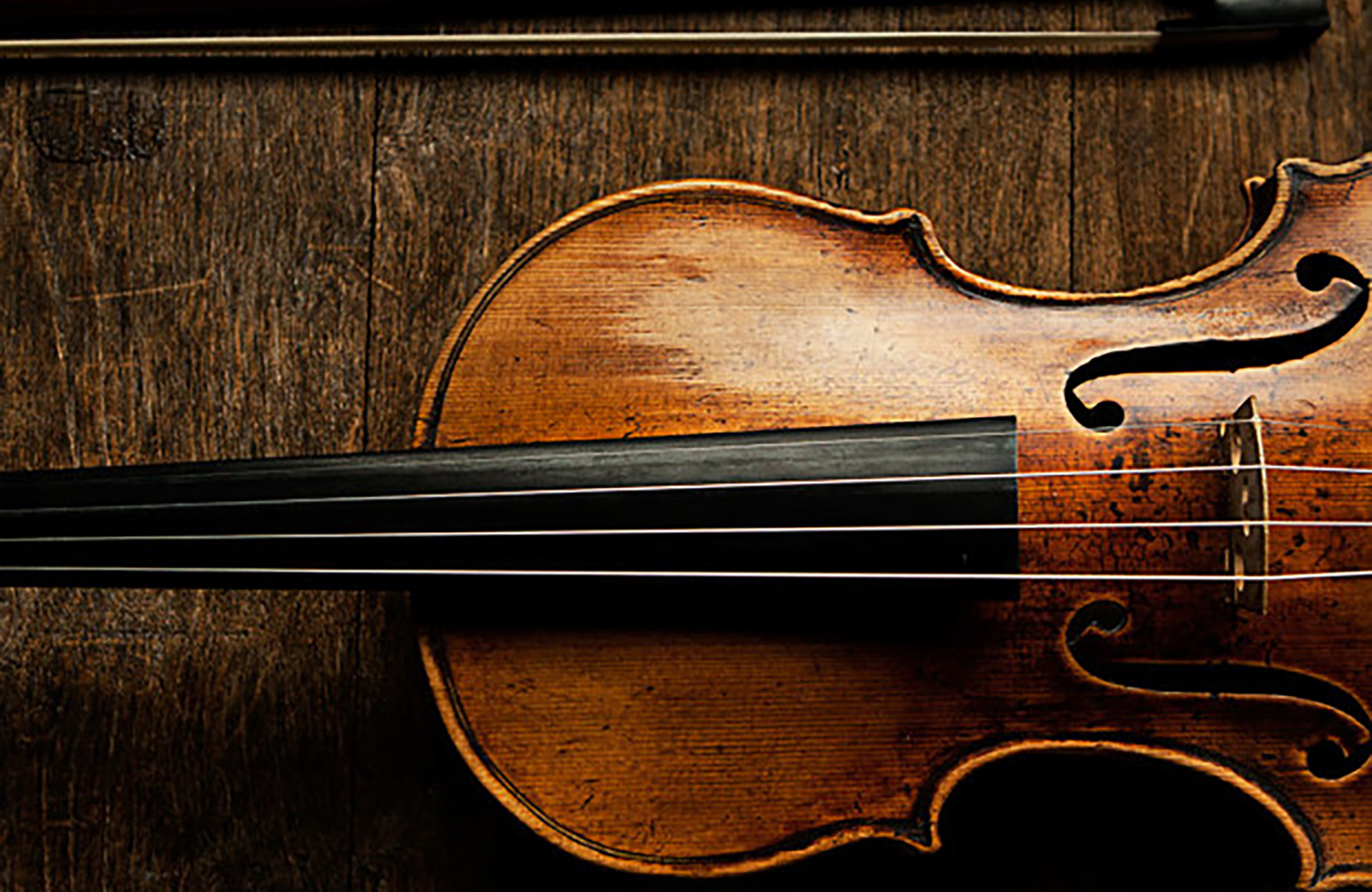Celebrating music that inspired movement through polka, marches, and the waltz, Symphoria performs the works of Offenbach, Strauss, and Korngold. Familiar tunes including the Can-Can from Orpheus in the Underworld and Blue Danube will fill the hall for this afternoon concert at the lovely St. Paul’s Church! This 75-minute concert will presented without intermission.
PROGRAM
OFFENBACH: Orpheus in the Underworld Overture ![]()
STRAUSS JR.: Voices of Spring Waltz ![]()
KORNGOLD: Straussiana ![]()
STRAUSS JR.: Excursion Train Polka ![]()
J. STRAUSS: Dragonfly Polka-Mazurka ![]()
J. STRAUSS: Little Chatterbox Polka
J. STRAUSS: Pizzicato Polka
STRAUSS JR.: Thunder and Lightning Polka
STRAUSS JR.: Blue Danube Waltz ![]()
*NO INTERMISSION
Thanks to our sponsors for this performance!
PROGRAM NOTES
When Adele Strauss—the third wife of Johann Strauss II (1825–1899)—asked Brahms for an autograph, he wrote out the opening of The Blue Danube Waltz (1866), adding the comment, “Unfortunately, not by Johannes Brahms.” The anecdote may seem apocryphal, especially since it has circulated in several slightly different versions. But it’s probably true. Brahms was a tremendous admirer of the music of Johann II. (I’ll use that nickname in these notes, not only to honor his status as “The Waltz King,” but also to distinguish him from the other Strausses ...
When Adele Strauss—the third wife of Johann Strauss II (1825–1899)—asked Brahms for an autograph, he wrote out the opening of The Blue Danube Waltz (1866), adding the comment, “Unfortunately, not by Johannes Brahms.” The anecdote may seem apocryphal, especially since it has circulated in several slightly different versions. But it’s probably true. Brahms was a tremendous admirer of the music of Johann II. (I’ll use that nickname in these notes, not only to honor his status as “The Waltz King,” but also to distinguish him from the other Strausses I’ll be mentioning). And vice-versa. Johann II’s waltz Seid umschlungen Millionen (Be Embraced, You Millions—a phrase taken from Schiller’s Ode to Joy which Beethoven set in the finale of his Ninth Symphony) was dedicated to Brahms.
At first glance, this mutual admiration is surprising. Even though Brahms dabbled in music with commercial appeal (for instance, the Hungarian Dances), he is generally considered among the heaviest and most severe of the great 19th-century composers. Johann II, the most successful and prolific of a dynasty of composers and performers, is the epitome of the suave musician who speaks to popular tastes.
Johann II was so popular, in fact, that at the peak of his fame in Vienna, there were sometimes multiple “Strauss Orchestras” performing at the same time in different parts of the city, with the Waltz King himself rushing from one to another to make an appearance before his adoring admirers. But Johann II was anything but tawdry. Rather, he was an enormously skilled composer, an accomplished orchestrator with the kind of melodic gift we find in Schubert and Tchaikovsky; and Brahms was not the only “serious” classical composer of the times to be seduced by his music. Even Wagner and Liszt, leaders of the musical avant-garde at the end of the 19th century, were among his many contemporaries who adapted (and influenced) his music.
The Blue Danube is the most ubiquitous of Johann II’s waltzes—showing up in a variety of contexts ranging from the soundtrack of Stanley Kubrick’s 2001 and the ads for Rival Dog Food to the finale of New York City’s Big Apple Circus. Its character and quality are immediately evident in its introduction, which not only incorporates some subtly surprising harmonies but also reveals what today’s conductor Mélisse Brunet calls his “amazing orchestration.” It’s followed by five different waltzes (wandering through a number of different keys), concluding with a lengthy coda that gathers up much of the main thematic material. If the major symphonic works of Beethoven and Brahms develop ideas, this work (like many of Johann II’s waltzes) drifts through ideas—much like the river itself.
The waltz is such an effective voyage, in fact, that for many of us—especially those who do not live nearby—it has defined our image of the Danube. Or perhaps I should say distorted our image. In reality, the river is not blue (there are, as with most major waterways, serious pollution problems) and, at the time, it did not even flow through Vienna’s city limits. In fact, the waltz—in its original form as a choral work—was slightly satirical, chiding Vienna after its defeat in the Austro-Prussian war. There’s a darker strain as well: Johann II’s grandfather drowned—possibly by suicide—in the Danube in 1816. This sparkling work has helped erase all that, and the work now stands as a monument to the city and the river—a testament to the power of music to evoke our imaginations and help us escape from mundane reality.
Voices of Spring also began as a vocal work—in this case, a virtuoso coloratura display piece for solo voice and orchestra—before it was transformed into the purely orchestral work that’s more famous today. It, too, glides through a number of waltz tunes before it reaches its summary coda.
The vocal background of these waltzes is significant. In fact, according to Mélisse, it provides a crucial key to capturing the music’s spirit. As she puts it, the music is notable for its “lightness, its atmosphere of partying and celebrating and dancing”—a Viennese spirit analogous to the American spirit heard in John Philips Sousa marches. And when playing Johann II’s music, it’s necessary to avoid any “heavy bratwurst and beer sound.” As is well known, part of its intended effect comes from subtle application of rhythmic inflections—in particular, the “Viennese tradition that puts the second beat slightly closer to the first and that puts the third beat slightly closer to the next first beat. It’s comparable to playing jazz—you need to find the groove.” But Mélisse believes that paying attention to the vocal implications of the music is even more important than conveying the rhythm. “This is the only way, in my opinion, for an interpreter to be right on spot with the elegance and the style of the music. If you play the notes as if you’re singing them, then you’ll find all the elegance and it will sound natural.”
Beyond his large-scale waltzes, Johann II wrote several operettas (including Die Fledermaus)—and a vast number of slighter works which, as the two and a half polkas included this afternoon demonstrate, show the same craftsmanship and imagination as his more substantial works. Both Thunder and Lightning (1868) and the Excursion Train (1864) have some delightful sound effects—and like The Blue Danube, Excursion Train serves as a musical flight from reality. Listening to it, you’d never guess that Johann II detested train travel.
As for the half polka: the popular Pizzicato Polka (1869), like several other works, was a collaboration between Johann II and his brother Josef Strauss (1827–1870). Josef may have been the most talented of the Strauss family—or, at least, the most wide-ranging. A true polymath, he was an engineer (he invented a rotary street cleaning machine that was used in Vienna for years), a painter, a playwright, a pianist, a mathematician …. He tried to resist the siren call of the Strauss Orchestra—popular and lucrative as it was—but stepped in for his ailing brother in 1853, and eventually became a regular conductor. Like Johann II, he reached out across the “popular/serious” divide. He championed music by Beethoven, Mendelssohn, and Liszt, and brought much of Wagner’s music to concerts in Vienna before the operas made their way there. The Dragonfly Polka Mazurka and the Little Chatterbox Polka are, after the Pizzicato Polka, among his most popular compositions.
There were many other composers of light music at the time, some of whom are still occasionally played (Lanner and Waldteufel, for instance) and some of whom are forgotten. The Strauss family, and especially Johann II, remained popular—and valuable, both financially and culturally. In a particularly sinister twist, he was taken up by the Third Reich’s propaganda efforts, which included the institution of the Vienna Philharmonic New Year’s Strauss concerts in 1939 as a fund-raiser for the German war effort. (In fact, he was so valuable a commodity to the Nazis that records were altered to hide the family’s Jewish origins.) Fortunately, the music has managed to transcend the purposes to which it was put in those dark years.
The music also continued to resist the increasingly bold line drawn between serious and popular music. As we’ve seen, the Strauss family was entangled with the high art (especially the modernists) of their day; and that entanglement continued into the 20th century. Richard Strauss (no relation) was a fan and sometimes an imitator. Ravel’s La Valse, performed at our last Masterworks concert, began as an homage to Johann II (although it eventually shifted direction). The three key radicals of the so-called Second Vienna School—Schoenberg, Berg, and Webern, the composers who pioneered the twelve-tone system—all made Strauss arrangements. So did Shostakovich.
Even more closely tied to Johann II, though, was Erich Wolfgang Korngold (1897–1957). A child prodigy, Korngold went on to a two-pronged career. In Vienna in the 1920s, he was one of the most important post-romantic opera composers of his day, best remembered for such over-the-top shockers as Die Tote Stadt and Das Wunder der Heliane (with a nude scene that makes Strauss’s Salome seem modest). Later on, especially once he moved permanently to the United States after the Nazi annexation of Austria, he increasingly turned his attention to producing lush scores for films like Captain Blood and The Sea Hawk. His success would be hard to overestimate. Indeed, he’s largely responsible for the “Hollywood Sound.”
Throughout his life, Korngold wrote concert music as well (his Violin Concerto has become his most famous concert work). More surprisingly, in both Vienna and the United States, he adapted several of Johann II’s operettas, taking up Die Fledermaus more than once. In fact, it was in part his work on Johann II that led to his first invitation to Hollywood. It’s therefore fitting that Johann II served as the inspiration for his final concert work, Straussiana (1953), based on tunes from three of Johann II’s lesser-known theater works.
Korngold also engaged in successful adaptations of the music of Jacques Offenbach (1819–1880)—as did Josef Strauss, who wrote a number of quadrilles based on tunes from his work. If Johann II was the Waltz King, Offenbach, says Mélisse, is the King of Operetta; and even though he was actually born in Cologne, he has much the same position in French culture and the Strausses do in Viennese culture. There are stylistic similarities, too, in the lightness that requires the performer to remember that it’s “music to be sung.” “Everything,” she says, “needs to be refined.”
Still, for all the musical similarities, there are significant differences. In particular, Offenbach’s operettas are much edgier and sexier than Johann II’s, full of political barbs and attacks on the “decency” enforced by bourgeois public opinion. A smack at respectability lies at the core of his first multi-act operetta, Orpheus in the Underworld (1858, revised 1874). In the original myth, of course, Orpheus is so deeply in love with Eurydice that when she dies, he ventures into the Underworld to rescue her. This retelling transforms them into a bickering couple happy to be rid of each other. Orpheus only makes his journey when he’s forced to do so by Public Opinion. The most famous number is the Can-Can, a work as recognizable as the Blue Danube, which is previewed at the end of the rousing Overture.
Or that’s what public opinion has to say about the Overture. In fact, the work that usually shows up as the Overture to Orpheus in the Underworld is not the operetta’s real overture, but a concoction made by Carl Binder for a production in the Strausses’ home territory, Vienna. And the dance we know so well is not a can-can, but a galop—it only became associated with the can-can when it was repurposed, eventually becoming a staple of French cabarets. None of that flattens the champagne that flows through the work that opens our concert this afternoon.
Peter J. Rabinowitz
Have any comments or questions? Please write to me at prabinowitz@ExperienceSymphoria.org
FEATURED ARTISTS

French conductor Mélisse Brunet, from Hispanic and Italian descent, is currently living in Philadelphia, PA. She is quickly gaining attention on both sides of that Atlantic as a “skilled and polished conductor with panache” (ClevelandClassical.com). In July 2022, she became the fifth Music Director of the Lexington Philharmonic, ...
French conductor Mélisse Brunet, from Hispanic and Italian descent, is currently living in Philadelphia, PA. She is quickly gaining attention on both sides of that Atlantic as a “skilled and polished conductor with panache” (ClevelandClassical.com). In July 2022, she became the fifth Music Director of the Lexington Philharmonic, KY, and the first woman to hold the position, she is also in her third season as the Music Director of the Northeastern Pennsylvania Philharmonic, PA.
Brunet is one of the five conductors featured in the documentary “Maestra” by the Director Maggie Contreras and produced by David Letterman and Melanie Miller (“Navalny”), among others. The world premiere was on June 9 at the Tribeca Festival, in NYC, and won the 2nd place to the 2023 Tribeca Audience Award – Documentary. It has received rave reviews in the press, including two articles in the New York Times, the Los Angeles Times, and the Hollywood Reporter.
During the 2023-24 season, besides her two orchestras, she will be conducting the Nashville Symphony Orchestra, the Eugene Symphony, the West Virginia Symphony, the Orchestre d’Avignon (France), the University of Illinois orchestra, and promoting “Maestra” in various festivals.
A protégée of Pierre Boulez, Brunet was one of the 14 finalists selected over 200 applicants for the second edition of the International Competition La Maestra in 2022 in Paris. She was one of six conductors selected for the 2018 Bruno Walter National Conductor Preview (Nashville Symphony Orchestra), chosen for their “experience, talent, leadership potential, and commitment to a career in service to American orchestras.”
As a dynamic advocate of contemporary music, Brunet has collaborated with composers such as T.J. Cole, Steven Stucky, Michael Daugherty, Shulamit Ran, James Barry, Mary D. Watkins, Loren Loiacono, and Jennifer Higdon, among others.
As an opera and music-theatre conductor, Brunet has conducted Dead Man Walking by Jake Heggie and Puccini’s Gianni Schicchi at the Power Center in Ann Arbor; four staged performances of Mozart’s Die Zauberflöte; and Bernstein’s Trouble in Tahiti, Menotti’s The Old Maid and the Thief, Sondheim’s Sweeney Todd, and Strauss II’s Die Fledermaus in Boone, NC, and two staged performances of Verdi’s La Traviata at the Coralville Center for Performing Arts, IA.
As a Pops conductor, Brunet has been collaborating with Spot-On Entertainment and Scott Coulter for several years, as well as with many other entertainment companies. She has been programming Pops concerts for Holiday Pops, Independence Day, Halloween, Valentine, and some thematic programs (notably a John Williams tribute), performing indoors and outdoors for up to 6000 people. Finally, she also conducted orchestras during live movie projections (without click track).
Brunet is a respected educator in both France and the USA. Most recently, she served as the first woman Director of Orchestral Studies at the University of Iowa-School of Music, where she conducted symphonic concerts, operas, and musical theater. In addition, she headed the orchestral conducting program at the Master’s and Doctoral levels, from which her students won major positions.
A native of Paris, Brunet began her studies on the cello, and learned to play the trumpet, French horn, and piano. She holds six diplomas from the Paris Conservatory (Analysis, Harmony, Counterpoint, Renaissance Counterpoint, Orchestration, and a Masters in Orchestral Conducting), a bachelor’s in music from the Université la Sorbonne, a Professional Studies diploma from the Cleveland Institute of Music, and a Doctorate in conducting from the University of Michigan. Aside from Pierre Boulez, her mentors have included Kenneth Kiesler, Lawrence Loh, Carl Topilow, Zsolt Nagy, and Joel Smirnoff. Brunet also took part in international workshops where she studied with Marin Alsop, Gustav Meier, David Stern, Peter Eötvös, and Jorge Mester. She has studied French, English, German, and Italian lyric diction, and speaks English, French, Italian, Chinese, and a rusty Spanish, Hebrew, and German.




